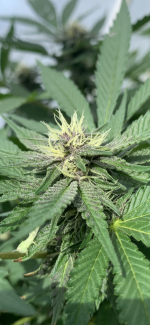40degsouth
Well-known member
Hey everyone.
I remember reading and trying to track down Owls Quick Skunk, l think it was called, looked good. I’m pretty sure he and Esbe used to work together.
Yeah Pipeline, once they’ve finished the wet they go back into a dry trial, two of each. This is just a small part of the due diligence l do in my breeding.
And to finish, here’s the photos of the leaf spot on a few different plants just for you Old Piney. I’m pretty sure you’ll get the idea even though it’s dry and crispy today.
40






I remember reading and trying to track down Owls Quick Skunk, l think it was called, looked good. I’m pretty sure he and Esbe used to work together.
Yeah Pipeline, once they’ve finished the wet they go back into a dry trial, two of each. This is just a small part of the due diligence l do in my breeding.
And to finish, here’s the photos of the leaf spot on a few different plants just for you Old Piney. I’m pretty sure you’ll get the idea even though it’s dry and crispy today.
40






